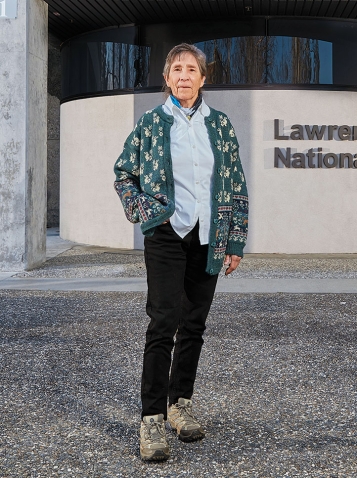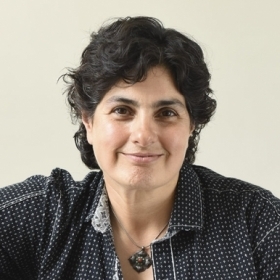For more than half a century, scientists and science fiction writers alike have dreamed of harnessing nuclear fusion to reproduce the process that powers our sun to create limitless, clean energy here on Earth. Last December, that dream became far closer to reality when scientists at Lawrence Livermore National Lab (LLNL) in California announced a breakthrough: They achieved, and even exceeded, the first-ever break-even nuclear fusion reaction, producing more energy from fusion than the laser energy used to drive it. In the process, 192 laser beams delivered about 2 million joules of energy to a tiny fuel pellet, resulting in about 3 million joules of fusion energy output.
Judy Harte ’68 has been there almost from the beginning. A computational physicist at Livermore, she has worked for the past 50 years helping to develop the code that scientists use to design, model, and understand fusion experiments. “I develop it, I debug it, and I help people use it,” she says. The original code she started on is still in use; today it runs more than half a million lines long and serves more than 70 users.
When Judy first started at the lab, nuclear fusion felt almost within reach. “We were going to solve the energy crisis,” she remembers. “We were designing power plants!” At first, Washington eagerly funded the research, but as the decades passed and progress was incremental, funding dried up. There were some very lean decades and many layoffs. The fusion program kept going only because the lasers involved were also useful for maintaining our confidence in the country’s weapons arsenal.
But Judy stayed on, and as the decades passed, researchers refined their experiments, benefiting from huge advances in laser technology—and improved computer modeling and much faster computers. Judy started out at Livermore when teletypes were new. Now LLNL is bringing up an exascale computer. “Exa” means a number with 18 zeros after it; exascale computers can conduct more than 1,000,000,000,000,000,000 floating point operations per second (FLOPS). The challenge is to actually achieve that incredible, theoretical speed in the physics simulation code.
Judy has always gravitated to math and science, and she never considered studying anywhere but Wellesley. Both her mother, Alice Taylor Harte ’33, and her older sister, Victoria Harte Money ’64, are alums. “My mother said, ‘You will love physics at Wellesley,’” Judy recalls. “It was a college where women’s careers and intelligence were encouraged.” (Alice had been a science major and earned a master’s in astronomy, during a period when the College awarded such degrees.)
At Wellesley, Judy double-majored in math and physics. After graduation, she took a summer job at Lawrence Livermore, where she has been more or less ever since, even while earning a Ph.D. in applied science from UC Davis in ’75 and completing a postdoc at UC Berkeley.
In February, she was honored for her 50 years of service at the lab. From a long list of commemorative gift options, she chose a chainsaw. “I knew I would use the chainsaw,” she laughs. Judy and her wife, Susan, enjoy gardening and construction work, having designed and built multiple additions onto their home over the years.
People often ask why she has stayed at the same job so long, but Judy wonders why so many people leave. “There is so much going on here that you don’t atrophy in your job,” she says. “You always grow.”
Although commercial viability for nuclear fusion could be another 50 years in the future, Judy still believes in its promise. “If we could get this to work, it would solve a lot of the problems of the world,” she says.
And while Judy won’t likely be working at LLNL when that day finally arrives, she has no intention of retiring any time soon, or even slowing down. At 76, she still cycles around Berkeley and teaches karate, having earned her fifth-degree black belt. She looks forward to each new day at the lab—especially the next laser shot, planned for later this year.








We ask that those who engage in Wellesley magazine's online community act with honesty, integrity, and respect. (Remember the honor code, alums?) We reserve the right to remove comments by impersonators or comments that are not civil and relevant to the subject at hand. By posting here, you are permitting Wellesley magazine to edit and republish your comment in all media. Please remember that all posts are public.